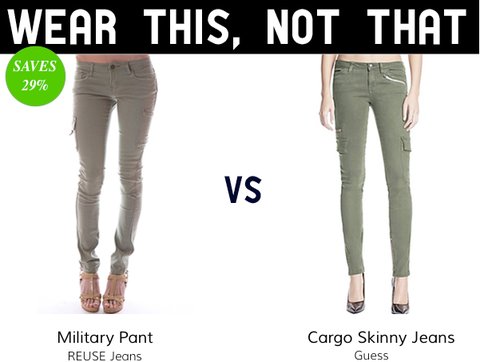 Courtesy of Fashioning Change
Courtesy of Fashioning Change
Fashioning Change
A social entrepreneur tries to change the way people shop.
There have been a lot of grim stories lately involving the manufacture of clothing.
Over the last few months, there have been factory fires in Bangledesh that have taken the lives of hundreds of men and women who endured depressing sweatshop environments in order to feed their families. These factories were producing products for global brands like Wal-Mart, Disney, and Enyce. And a recent study by Greenpeace International concluded that Calvin Klein, GAP, Zara, Diesel, and other top apparel brands produce clothes that contain high levels of dangerous chemicals.
Does it make sense that these and other brands are allowed to make products that expose people throughout their supply chains — cotton farmers to garment workers to consumers — to cancer-causing and endocrine-disrupting agents that can cause birth defects, learning disorders, and even death? If clothing were food, wouldn’t there be a recall?
In most cases, these brands have little to fear in the way of regulation. What they do fear is a loss of sales – and that is where my start-up, Fashioning Change, hopes to play a role. We have built a marketplace that offers stylish, money-saving, safe, sustainable, and sweatshop-free alternatives. Our goal is to support manufacturers that are doing things right – and to leave the big brands no option but to adopt authentic practices that protect health, the Earth, and human rights. That’s our plan, any way.
When we share that plan with venture capitalists, we are often told, “but shoppers won’t pay more for products that are green or socially responsible.” And we don’t think they should have to. That’s why, in addition to showcasing socially responsible brands, we are using our marketplace to demonstrate that shopping “green” doesn’t have to mean spending more or compromising on style and quality.
To prove our point, we built a feature on our Web site that we call Wear This, Not That (see photo above). Here’s how it works: We look for styles that are trending within mainstream brands, and then we review the Fashioning Change catalog for items that are comparable in price and style. When we find a match, we feature a side-by-side comparison of the Fashioning Change alternative to the mainstream product. Every comparison presents the fashion aesthetics and the price and also highlights the brand’s manufacturing process. Here’s an example, Wear This, Not That: Reuse Jeans vs Guess.
We did an analysis comparing more than 100 products from 27 mainstream brands to the Fashioning Change equivalent, and the data showed that shoppers can save an average of 27 percent with our alternatives. From Black Friday through Cyber Monday, we calculated that shoppers buying through Fashioning Change saved $25,509.84 — the difference between our retail price and what these shoppers would have spent on the mainstream option.
All of this may sound simple but making it happen isn’t easy, especially when you don’t have a huge budget to spend on marketing. To help us connect with each member of our growing audience, we built a targeted e-mail system that reviews shared preferences and site behavior to help us understand what e-mail content is relevant for each person. We use that data to share relevant information with each person who signs up for Fashioning Change. Every day, we work to increase our relevancy to each person so that we can make more sales while reducing pollution and the use of sweatshops.
So far, all of the money we make goes back into building Fashioning Change. My co-founder Kevin and I have forgone salaries until we can get Fashioning Change to profitability (something we look forward to in the near future). In order to live without a salary, I gave up my two-bedroom apartment, sold all of my furniture, and moved into my parent’s guest room. I lived there for more than a year on savings while getting the company started. Now I split time between the Fashioning Change house in Santa Monica and my parent’s house in San Diego. (I also gave up health insurance, which I will discuss in my next post.)
We see fashion as just the beginning for us. We have built a Web platform that will eventually allow us to provide access to authentic, great-looking, money-saving, sustainable, and sweatshop-free alternatives to almost everything that goes on (or in) our bodies, in our homes, or into our communities: clothes, food, detergents, cars, bedding, toothpaste, etc. While we could start adding all different types of products, I believe our success will lie in attacking one vertical at a time. We will see how quickly our vision gains momentum.
Some of the older investors we meet seem skeptical that we can create this mix of business and ethics. We’re looking forward to proving them wrong.
Questions? Thoughts? Lets connect, talk shop, and build some original and meaningful start-ups in the process. You can leave a comment below, or e-mail me at adriana@fashioningchange.com. You can also find me on Twitter at @adriana_herrera.
Article source: http://boss.blogs.nytimes.com/2013/02/05/our-vision-make-sales-to-end-sweatshops/?partner=rss&emc=rss
Speak Your Mind
You must be logged in to post a comment.